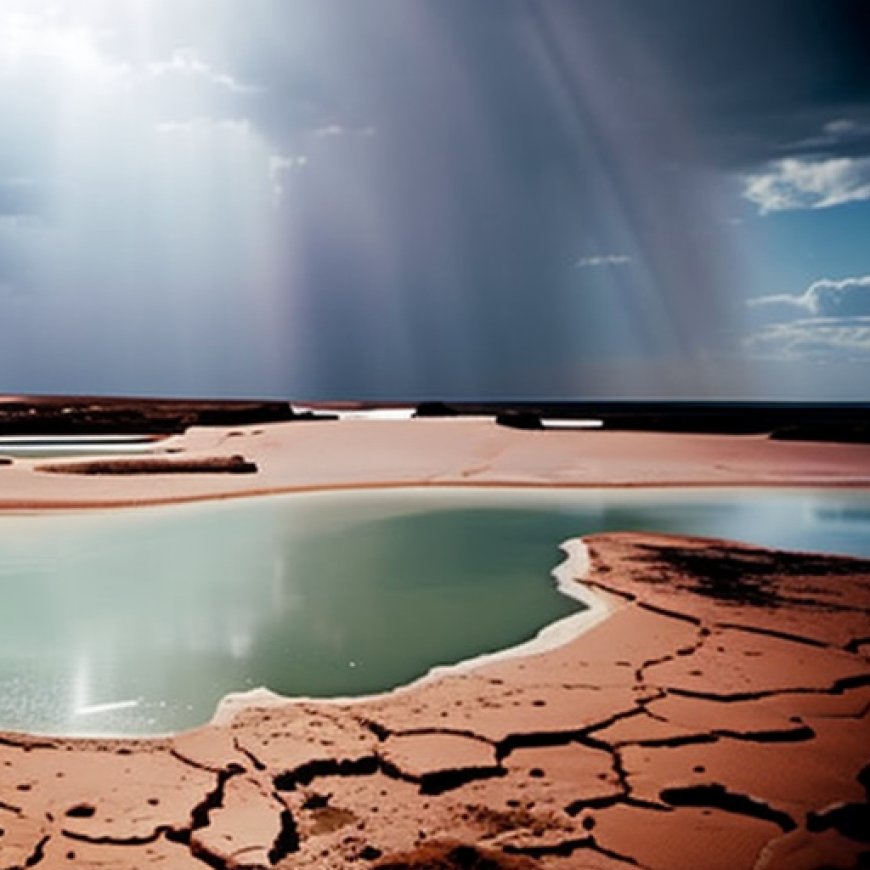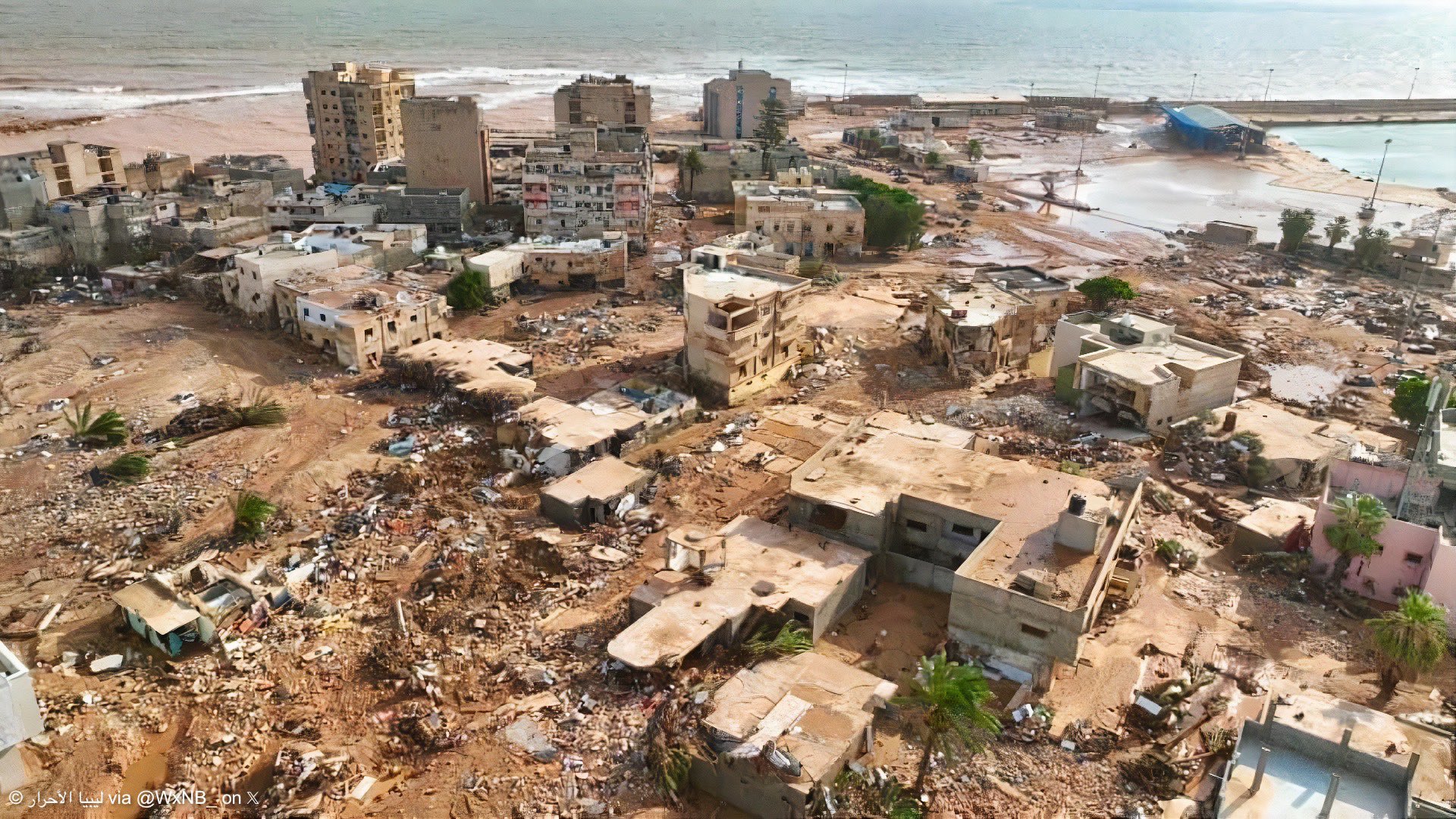Climate Change Made Libya Floods Up to 50 Times More Likely, Study Finds | Earth.Org
Climate Change Made Libya Floods Up to 50 Times More Likely ... EARTH.ORG


The Alarming Consequences of Climate Change in the Vulnerable Mediterranean Region

Introduction
The following report sheds light on the alarming consequences of climate change in the vulnerable Mediterranean region. It highlights the urgent need for adaptation and mitigation strategies to address the increasing risks posed by extreme rainfall events. The report emphasizes the importance of aligning these strategies with the Sustainable Development Goals (SDGs) to ensure a sustainable and resilient future for the region.
1. Climate Change and Extreme Rainfall in the Mediterranean Region
This summer, the Mediterranean region experienced deadly floods in countries such as Greece, Turkey, and Libya. A recent study conducted by the World Weather Attribution found a clear link between climate change and these extreme rainfall events. By analyzing historical rainfall data, climate models, and socioeconomic factors, researchers were able to attribute the observed changes in rainfall patterns to human-induced climate change.
- The study reveals that increased greenhouse gas emissions have intensified the hydrological cycle, leading to more frequent and intense rainfall events.
- Factors such as population density, urbanization, and inadequate infrastructure have exacerbated the impacts of these extreme downpours on communities, ecosystems, and the economy.
2. Impacts on Greece, Bulgaria, Turkey, and Libya
The study indicates that climate change has significantly influenced the deadly floods in Greece, Bulgaria, Turkey, and Libya. It highlights the following findings:
- Greece’s flooding, which is considered a 1-in-250-year event, was made up to 10 times more likely to occur and 40% more intense due to anthropogenic climate change.
- Libya’s floods, a catastrophic natural event that typically occurs once every 300 to 600 years, were made up to 50 times more likely and up to 50% more intense compared to a 1.2C cooler climate.
3. Disproportionate Impacts on Marginalized Communities
The research highlights the disproportionate impacts of climate change on marginalized communities and vulnerable populations in the Mediterranean region. Socioeconomic factors such as poverty, limited access to resources, and inadequate infrastructure exacerbate their vulnerability to extreme weather events. The case of Libya demonstrates how political instability and neglect of infrastructure can turn an extreme event into a humanitarian disaster.
4. Hotspots and the Importance of Adaptation Strategies
The study identifies hotspots within the Mediterranean region that are particularly vulnerable to climate change-induced rainfall. These areas, including coastal cities and low-lying regions, face a higher risk of flooding, landslides, and other related hazards. To mitigate the impacts of extreme rainfall events, targeted adaptation strategies and improved resilience measures are crucial in these hotspots.
5. The Call for Climate Action
The study serves as a wake-up call for governments, organizations, and individuals to prioritize climate action in the Mediterranean region. The findings underscore the interconnectedness between climate change, extreme rainfall, and vulnerability, emphasizing the need for a comprehensive and integrated approach to address the challenges posed by a changing climate. By aligning these efforts with the Sustainable Development Goals (SDGs), the region can work towards a sustainable and resilient future.
Featured image: ليبيا الأحرار/Twitter
SDGs, Targets, and Indicators
1. Which SDGs are addressed or connected to the issues highlighted in the article?
- SDG 13: Climate Action
- SDG 11: Sustainable Cities and Communities
- SDG 1: No Poverty
2. What specific targets under those SDGs can be identified based on the article’s content?
- SDG 13.1: Strengthen resilience and adaptive capacity to climate-related hazards and natural disasters
- SDG 11.5: By 2030, significantly reduce the number of deaths and the number of people affected and substantially decrease the direct economic losses relative to global gross domestic product caused by disasters, including water-related disasters, with a focus on protecting the poor and people in vulnerable situations
- SDG 1.5: By 2030, build the resilience of the poor and those in vulnerable situations and reduce their exposure and vulnerability to climate-related extreme events and other economic, social, and environmental shocks and disasters
3. Are there any indicators mentioned or implied in the article that can be used to measure progress towards the identified targets?
- Indicator for SDG 13.1: Number of deaths, missing persons, and directly affected people attributed to climate-related hazards and natural disasters
- Indicator for SDG 11.5: Number of deaths, missing persons, and economic losses caused by water-related disasters
- Indicator for SDG 1.5: Proportion of population living below the national poverty line, disaggregated by sex, age, employment status, and geographical location, and their exposure and vulnerability to climate-related extreme events
SDGs, Targets, and Indicators
| SDGs | Targets | Indicators |
|---|---|---|
| SDG 13: Climate Action | 13.1: Strengthen resilience and adaptive capacity to climate-related hazards and natural disasters | Number of deaths, missing persons, and directly affected people attributed to climate-related hazards and natural disasters |
| SDG 11: Sustainable Cities and Communities | 11.5: By 2030, significantly reduce the number of deaths and the number of people affected and substantially decrease the direct economic losses relative to global gross domestic product caused by disasters, including water-related disasters, with a focus on protecting the poor and people in vulnerable situations | Number of deaths, missing persons, and economic losses caused by water-related disasters |
| SDG 1: No Poverty | 1.5: By 2030, build the resilience of the poor and those in vulnerable situations and reduce their exposure and vulnerability to climate-related extreme events and other economic, social, and environmental shocks and disasters | Proportion of population living below the national poverty line, disaggregated by sex, age, employment status, and geographical location, and their exposure and vulnerability to climate-related extreme events |
Behold! This splendid article springs forth from the wellspring of knowledge, shaped by a wondrous proprietary AI technology that delved into a vast ocean of data, illuminating the path towards the Sustainable Development Goals. Remember that all rights are reserved by SDG Investors LLC, empowering us to champion progress together.
Source: earth.org

Join us, as fellow seekers of change, on a transformative journey at https://sdgtalks.ai/welcome, where you can become a member and actively contribute to shaping a brighter future.







